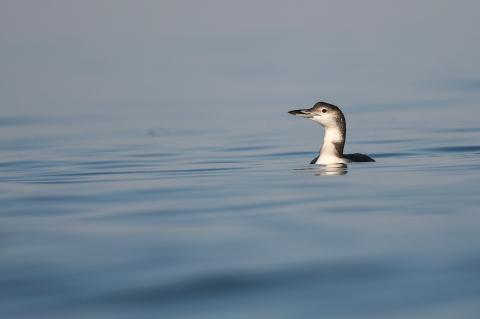After breeding on the northern lakes, loons arrive on the East End in the autumn and increase in numbers through the winter as their breeding territories freeze. They can survive our winter water because they’re so well insulated.
Outdoors
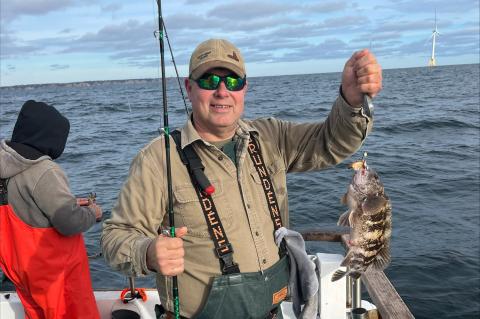 On the Water: The Last Fishing Trip?
On the Water: The Last Fishing Trip?With the season for blackfish and sea bass concluding in a few weeks, our columnist headed toward Block Island on a trip organized by Bill Bennett of Sag Harbor. They enjoyed consistent action all morning.
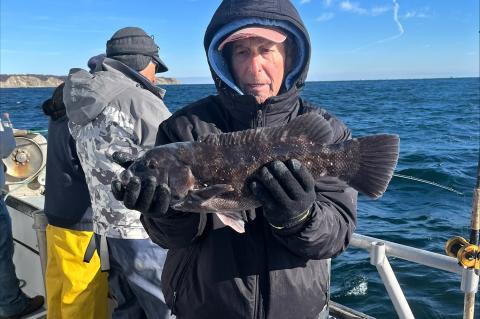 On the Water: The End Is Near
On the Water: The End Is Near“I honestly don’t think I missed a fish, as they were taking the bait with such abandon,” Joel Fisher said of the waters off Big Gull Island. “All were in the 14-to-17-inch range. It was a great way to end the season.”
 On the Water: Back to Block
On the Water: Back to BlockThe plan was to head out on a 90-minute ride to Block Island for blackfish, sea bass, and codfish. When boats were able to get out in recent days, the action was good, especially for blackfish.
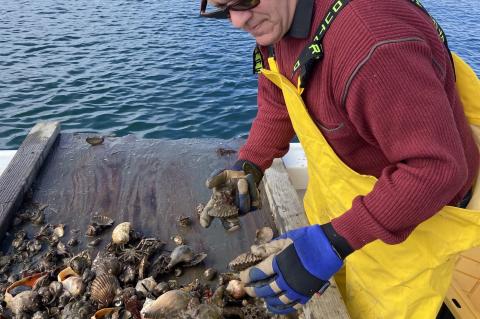 On the Water: Sad News for Scallops, Again
On the Water: Sad News for Scallops, AgainLast November I landed one bushel of scallops on opening day in and around Shelter Island Sound. The next day, however, I struggled to land barely a quarter bushel. East Hampton Town waters will open to scalloping in two weeks.
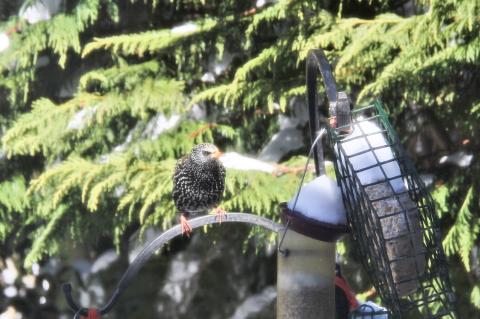 A Bird Count for Everyone
A Bird Count for EveryoneNovember is the month when a dedicated group of citizen scientists begin to count birds as part of Project FeederWatch, a Cornell Lab of Ornithology program now in its 37th year. It’s simple. Go to feederwatch.org, pay $18, learn how to report your birds, get some swag that will help you make proper identifications, and you’re on the team.
 On the Water: Smart Fishing
On the Water: Smart FishingBlackfishing has been tough of late, “but bass, blues, and false albacore are still running well in Plum Gut,” Ken Morse of Tight Lines Tackle said, and anglers have experienced blitz-like fishing for striped bass around the Montauk Lighthouse.
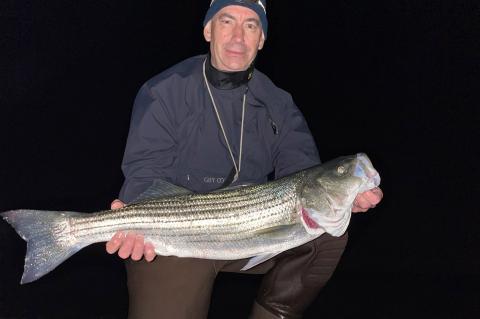 On the Water: A ‘Tap, Tap, Tap’ Day
On the Water: A ‘Tap, Tap, Tap’ Day“Local spots like the Sag Harbor bridge, Nichols Point, and the black spindle rock pile outside the breakwater have been producing of late,” Ken Morse of Tight Lines Tackle said from behind the counter of his new establishment in Southampton.
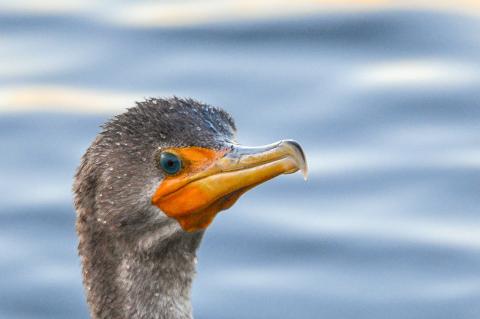 On the Wing: The Slightly Creepy Cormorant
On the Wing: The Slightly Creepy CormorantThere is something creepy about cormorants. From most distances, they look black, with long thick necks, tails, and wings. In flight, they appear like black crosses. Against a cormorant, fish have no hope; the tip of their orange bill is hook-shaped, a perfect tool to capture over 250 species of fish. Soon those single black crosses will join to form sky-wide, shape-shifting patterns as they migrate away.
 On the Water: A Miracle Revisited
On the Water: A Miracle RevisitedBefore the water turns to ice here on the East End, the local fishing scene seems to be holding up just fine. Bass, bluefish, tuna, sea bass, porgies, and blackfish are hungry and on the feed.
 On the Water: A Harbor Farewell
On the Water: A Harbor FarewellThe closing of Tight Lines Tackle in Sag Harbor is most unfortunate. Small mom-and-pop, one-man businesses like Ken Morse’s establishment continue to be squeezed out because of high rents. It’s a troublesome trend that has become too frequent here.
 A Bad Year for Piping Plovers
A Bad Year for Piping PloversIt was a bad year to be a piping plover in East Hampton. In fact, the worst since at least 2008. While 32 pairs of plovers made East Hampton Town beaches their summer homes, only seven of those pairs were successful in fledging 15 young. Plovers in Southampton Town had a more successful summer.
 On the Water: Back on the Court
On the Water: Back on the Court“Yeah, the weather gods have not been cooperating of late,” Ken Morse at Tight Lines Tackle in Sag Harbor said of the slow fishing. “The winds were relentless, but it appears things are finally going to calm down.”
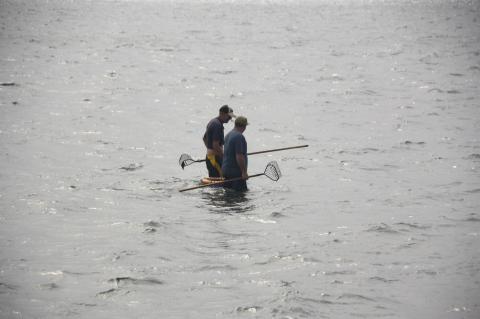 New Dates Not Yet Set for Big Clam Dig
New Dates Not Yet Set for Big Clam DigUPDATE: Those wishing to put their rakes to the test for the East Hampton Town Trustees’ Largest Clam Contest will have to wait a bit longer to dig for the winners in Lake Montauk, Napeague Harbor, Accabonac Harbor, Hog Creek, and Three Mile Harbor, as heavy rains have closed many areas to shellfishing and forced a second rescheduling of the annual event.
 On the Water: Tight Lines Moves On
On the Water: Tight Lines Moves OnJust as Tropical Storm Ophelia ushered out summer, Ken Morse, the man behind Tight Lines Tackle in Sag Harbor, is moving out — to Southampton.
 On the Water: Same as It Ever Was
On the Water: Same as It Ever WasThere’s bad news for anglers in NOAA’s analysis of its annual recreational fishing survey.
 On the Water: A Fee for Saltwater Fishing Permits?
On the Water: A Fee for Saltwater Fishing Permits?If you fish in saltwater in New York and are over the age of 16, you must possess a free Department of Environmental Conservation marine registry permit. But now the marine registry may soon cease to exist, as the D.E.C. is considering a fee-based license for fishing in the state’s marine waters.
 On the Water: Fair Winds, Jimmy
On the Water: Fair Winds, JimmyJimmy Buffett, who had a house on North Haven, loved the waters of the East End, whether surfing, sailing, or fishing.
 On the Water: Bleak Outlook for Scallops
On the Water: Bleak Outlook for ScallopsThe outlook for the bay scallop season, which is set to start in early November, is once again poor. For the fifth summer in a row, there has been a significant die-off of mature bay scallops in local waters.
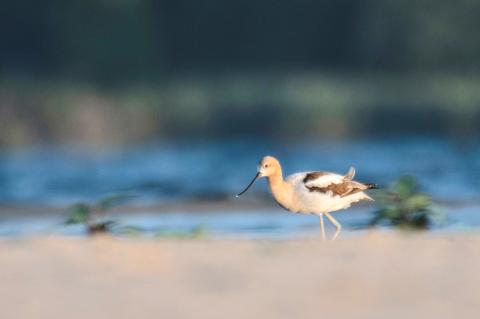 On the Wing: Epic Summer for Rare Birds at Mecox
On the Wing: Epic Summer for Rare Birds at MecoxJust over the lip of the dune bordering the lot at Scott Cameron Beach is one of the most important habitat areas for shorebirds on the entire East End: Mecox Inlet.
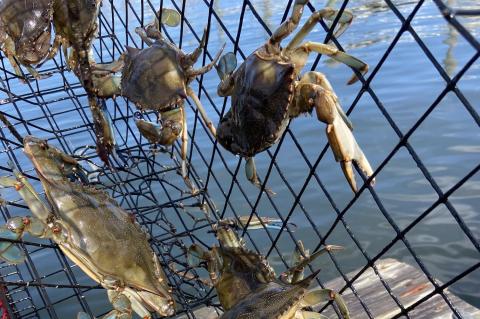 On the Water: Grab a Crab at Rehab
On the Water: Grab a Crab at RehabA cooler of blue-claws for a new friend in cardiac rehab might mark the first time the tasty shellfish have paid a visit to Stony Brook Southampton Hospital.
 On the Water: Head East for Fish
On the Water: Head East for FishThe direction you want to go during the August heat is east. “Whether it’s striped bass, bluefish, fluke, porgies, sea bass, or tuna, the fish now prefer to be in cooler, deeper waters,” said Ken Morse of Tight Lines Tackle in Sag Harbor.
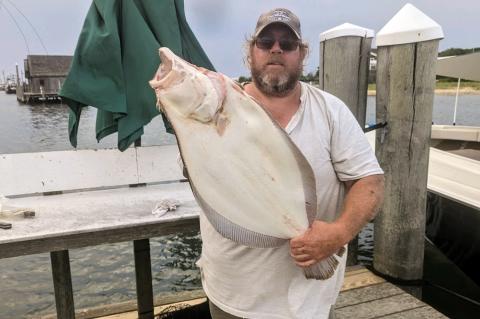 On the Water: North Fork Easy Rider
On the Water: North Fork Easy RiderI had done some fishing a few days earlier at Jessup’s Neck, and the bluefish were hungry, taking full advantage of my four-ounce diamond jig. I had my fill of fish, so I got on my motorcycle.
 Master Carver Coaxes Feathers From Wood
Master Carver Coaxes Feathers From WoodWith a careful, calculated touch, Robert Greene, a renowned decoy carver who lives in Springs, creates pieces so realistic they could easily be mistaken for taxidermy. “You gotta know the wood, you gotta be a halfway decent carver, you gotta be a decent painter. . . and you gotta be an artist,” he said.
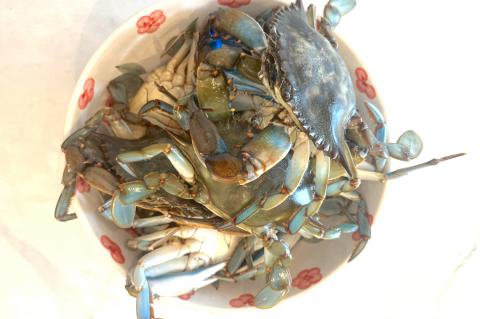 On the Water: No Need to Be Crabby
On the Water: No Need to Be Crabby“It’s been a great season thus far,” Harvey Bennett, former owner of the Tackle Shop in Amagansett, said of blue-claw crabs. “They are large and plentiful. More people need to take advantage of it. Blue-claws are the best to eat.”
 On the Water: Fluke Mojo Regained
On the Water: Fluke Mojo RegainedIf I truly wanted to catch a fluke, for all practical purposes I would need to hop aboard one of the several fine party boats that set sail from Montauk, which are significantly closer to the more productive fishing grounds.
 A Vulnerable Bird Endures in a Springs Marsh
A Vulnerable Bird Endures in a Springs MarshEast Hampton is downright lucky to have a population of saltmarsh sparrows, birds that are vulnerable because of their dependence on a habitat that shrinks with every centimeter in sea level rise: the salt marsh. The sparrows themselves are not so lucky: they've lost 75 percent of their population since 1990. The U.S. Fish and Wildlife Service is assessing whether the bird should be listed under the Endangered Species Act.
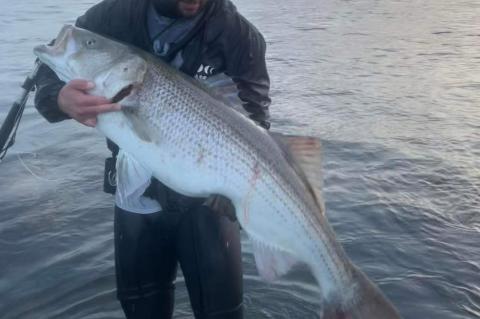 On the Water: Fluke Prove Evasive
On the Water: Fluke Prove EvasiveThe fishing for fluke has continued to deteriorate in Block Island Sound where dozens of boats used to drift their baited hooks on a daily basis in summer. Looking at my log book on the ride out, I noted that I had made two trips last summer and we failed to land a keeper. Not good.
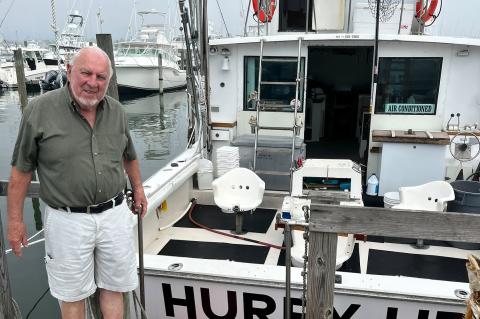 On the Water: A Legend Is Honored
On the Water: A Legend Is HonoredThe popular Montauk Grand Slam charity fishing tournament will be held this weekend at Uihlein’s Marina in Montauk. At 5 p.m. Sunday, the tournament will crown Capt. Frank Braddick as the Fishing Legend of the Year.
 On the Water: Better Weather, Please
On the Water: Better Weather, Please“Definitely, the better fishing has been out at Montauk,” Ken Morse of Tight Lines Tackle said Monday. “The bass fishing remains solid and there are acres and acres of bluefish between 10 and 18 pounds roaming around.”

